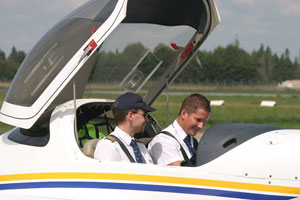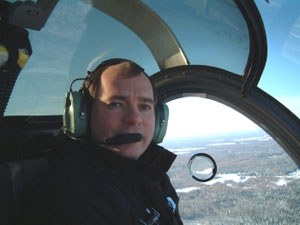Flying Instructor
Tasks & duties

Flying instructors may do some or all of the following:
-
teach the principles of flight, navigation and weather
-
teach the skills needed to handle aircraft
-
teach students how to fly visually, at night and by using navigational instruments
-
teach and follow aviation rules
-
conduct pre-flight checks on aircraft with students
-
prepare training programmes
-
test the skills and knowledge of students
-
perform cleaning or administrative duties to help run the school
-
teach qualified pilots about new types of equipment
-
teach qualified pilots how to operate different kinds of aircraft
Skills & knowledge

Flying instructors need to have:
-
excellent flying skills
-
knowledge of the technical and theoretical aspects of flying, including principles of flight (how aircraft fly) and aircraft technology
-
teaching skills
-
decision-making skills
-
communication and people skills
-
knowledge of civil aviation rules and laws
-
skill in flight planning and navigation
-
an understanding of how weather can affect flights
Entry requirements
The first step to becoming a flying instructor is to get your Commercial Pilot Licence (CPL).
After receiving your CPL, you need to study for an aeroplane or helicopter instructor rating. To receive an entry level C-category flying instructor rating, you must have:
200 hours of flight time, with 150 hours as pilot in command
at least 24 hours of flight theory study through an approved flight training programme
at least 25 hours of dual flight instructor training through an approved flight training programme
a pass score on flight instructor rating exams.
Civil Aviation Authority of New Zealand website – information on aeroplane or helicopter flight instructor licences and ratings (PDF – 218KB)
Civil Aviation Authority of New Zealand website – how to be a pilot guide (PDF – 0.99MB)
Secondary education
There are no specific secondary educational requirements to become a flying instructor. However, Sixth Form Certificate or NCEA equivalent English, maths, computing and physics are helpful.
Tertiary education
CPL and instructor-rating flight training is available at tertiary education institutions, aero clubs, flight training schools, and the Royal New Zealand Air Force.
Aviation Careers website – flight training organisations in New Zealand
Royal NZ Navy website – information about helicopter pilot training
Royal NZ Air Force website – information about pilot training
Training on the job
Since C-category flying instructors are supervised by B or A-category instructors, they may receive informal training or mentoring from these senior instructors.
Some flying schools may pay for additional ratings training and qualifications for their flying instructors.
Useful Experience
Useful experience for flying instructors includes:
-
teaching
-
flying
-
work with machinery
-
work in meteorology
-
aircraft loading
-
airport maintenance
Related courses
Aircraft Operation
For more information, please refer to Career Services.
Document Actions
